Introduction
Do Pigeons Get Cold: When it comes to the fascinating world of avian creatures, pigeons often find themselves at the center of curiosity. These ubiquitous urban birds have adapted to a wide range of environments and climates. The unique biology and behavior of pigeons shed light on their ability to cope with varying temperatures and the ways in which they adapt to chilly conditions. So, let’s embark on a journey to uncover the secrets of whether pigeons experience the chill of colder weather or if they have their own avian strategies to keep warm.
Pigeons, scientifically known as Columba livia, are a common sight in cities and towns worldwide. These birds have a remarkable ability to thrive in diverse environments, from the bustling streets of metropolises to the serene countryside. However, despite their adaptability, questions persist about how they contend with the cold. In this exploration, we will examine the physiological adaptations and behaviors that pigeons employ to deal with low temperatures.
We’ll delve into their remarkable ability to regulate body temperature, their strategies for conserving heat, and any unique behaviors they exhibit when confronted with chilly conditions. Understanding how pigeons navigate the cold can provide valuable insights not only into their survival but also into the intriguing world of avian adaptation. So, let’s unravel the mystery of whether pigeons truly get cold and how they manage when the temperatures drop.
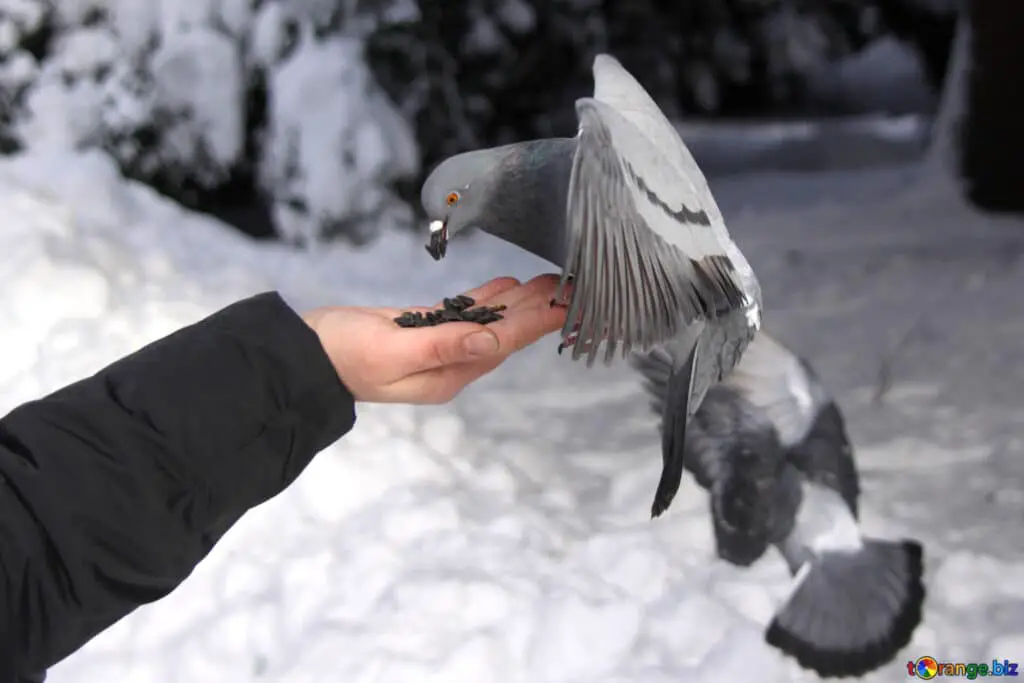
What do pigeons do when they’re cold?
Pigeons can reduce their exposure to the cold by tucking in their head and feet, sticking their feathers down and crouching. In extreme conditions, they can also constrict blood flow to their feet to further prevent heat loss. Flocks of pigeons are comfortable to huddle and roost close together to share warmth.
Puffing up Feathers: Pigeons have a dense layer of feathers that they can fluff up to create insulating pockets of warm air. By doing this, they trap heat close to their bodies, reducing heat loss and providing effective insulation against the cold.
Roosting: Pigeons are known for seeking sheltered spots, such as ledges, eaves, or tree branches, to roost during colder periods. These sheltered locations shield them from harsh winds and precipitation, helping them conserve heat.
Huddling: Pigeons often huddle together in groups when temperatures drop significantly. This communal behavior allows them to share body heat and collectively stay warmer than if they were alone.
Reduced Activity: When pigeons are cold, they tend to reduce their activity levels. By conserving energy and minimizing movement, they reduce the amount of heat their bodies need to generate.
Sunbathing: On sunny winter days, pigeons may be observed sunbathing. They spread their wings and expose themselves to direct sunlight to absorb warmth, which can be a crucial strategy for maintaining a comfortable body temperature.
Do pigeons need to be kept warm?
pigeons can live in the coldest climates without any supplemental heat at all. I would say if it is below freezing it would just be nice to have a bit of heat, but you really do not need it.
Natural Adaptations: Pigeons are equipped with natural adaptations to handle various temperatures. They can puff up their feathers, seek shelter, huddle together, and reduce activity to conserve heat when it’s cold.
Urban Environment: Pigeons have successfully adapted to urban environments where they often roost on buildings and bridges. These structures can provide some protection from the elements, especially during extreme cold.
Survival Instincts: Pigeons are resourceful birds and can find food in urban areas throughout the year. Their survival instincts are well-honed, and they are known to seek out warm spots, like vents or sunny patches, during colder weather.
Independence: Pigeons are not domesticated animals in the same way as pets like dogs or cats. They are self-sufficient and can find their own food and shelter, making them less reliant on human intervention for warmth.
Do pigeons shiver when cold?
pigeons can shiver. They can do it when they are cold, stressed, scared, nervous, and excited.
Pigeons, like many birds, have evolved various strategies to cope with cold temperatures, and shivering is not a primary method they use to stay warm. Instead, they rely on other mechanisms to regulate their body temperature when it drops.
One of the key strategies pigeons employ is puffing up their feathers. When they puff up, they trap a layer of warm air close to their bodies, acting as insulation against the cold. This fluffed-up appearance makes them appear larger and helps minimize heat loss.
Pigeons are known to reduce their activity levels when it’s cold. By limiting movement, they conserve energy and minimize the need to generate extra heat through muscle activity. This reduction in activity helps them maintain a stable body temperature.
How do I know if my bird is feeling cold?
It might be better to keep your bird in another room. Regardless of your heating type, maintain a stable room temperature and monitor your bird. If it fluffs up, buries its beak in its neck and is crouching so its feathers cover its legs then it is perhaps feeling cold.
Puffed Feathers: One of the most obvious signs is when your bird fluffs up its feathers to create an insulating layer of warm air. If your bird appears significantly puffier than usual, it’s likely trying to stay warm.
Shivering: While not all birds shiver when cold, some may exhibit slight tremors or shivering as a response to low temperatures. This behavior is more common in smaller birds.
Seeking Warmth: If your bird is constantly moving to warmer spots in its cage or environment, such as closer to a heat source or sunlight, it’s a clear indication that it’s feeling chilly.
Decreased Activity: Cold temperatures can lead to reduced activity levels in birds. If your bird is unusually lethargic or less active than usual, it might be due to the cold.
Cold Feet: Check your bird’s feet; if they feel cold to the touch or look pale, it’s a sign that the bird’s extremities are feeling the cold.
Loss of Appetite: Birds may eat less when they’re cold, as digesting food requires energy, and they may conserve energy when trying to stay warm.
Do birds feel cold at night?
Despite having layers of feathers, which they fluff up to trap warm air and increase their body heat, birds do feel the cold and often respond to cold weather by shivering to generate heat. Unfortunately, prolonged periods of cold weather can be catastrophic for garden birds.
Feather Insulation: The type and condition of a bird’s feathers play a crucial role in maintaining warmth. Birds with well-maintained plumage can trap warm air close to their bodies, providing insulation against the cold.
Species Variation: Some birds are better adapted to cold nights than others. Species native to colder regions often have thicker down feathers and other adaptations that help them tolerate lower temperatures.
Size Matters: Smaller birds tend to lose heat more quickly than larger ones because they have a higher surface area-to-volume ratio. This makes them more susceptible to feeling cold at night.
Metabolic Rate: A bird’s metabolic rate can affect how it feels cold. Birds with higher metabolic rates generate more heat, which helps them stay warmer during the night.
Shelter and Roosting: Many birds seek shelter in protected roosting spots at night, such as dense foliage, tree cavities, or nest boxes, to shield themselves from wind and temperature drops.
Can birds catch a cold from humans?
Humans do not transfer cold or flu viruses to their birds. In fact, there are only a couple of uncommon viruses that can be passed along to them, but it is very difficult to do so. We spend much more time in and around their body fluids than they do ours.
No, birds cannot catch a cold from humans, and vice versa. The common cold is caused by viruses known as rhinoviruses or other related viruses in humans. These viruses are highly species-specific, meaning they typically infect only humans and, occasionally, some primates. Birds, on the other hand, have their own set of avian-specific viruses, which are distinct from those affecting humans.
Birds can indeed suffer from various illnesses, including respiratory infections, but these are caused by avian-specific pathogens, such as avian influenza (bird flu) viruses. These pathogens do not typically infect humans, and human illnesses like the common cold do not affect birds.
It’s essential to practice good hygiene and maintain a clean environment when caring for pet birds or interacting with wild birds to prevent the spread of disease. There is a risk of zoonotic diseases that can transmit between animals and humans associated with birds, such as psittacosis, but these are relatively rare and require close contact with infected birds.
Do pigeons get sick?
There are a vast number of diseases that pigeons carry, each with varying degrees of severity, symptoms and outcomes. Not only are they carriers of pathogens, but also parasites who carry their own bacteria and spread disease.
Respiratory Infections: Pigeons can suffer from respiratory infections caused by bacteria, viruses, or fungi. These infections may lead to symptoms like coughing, sneezing, nasal discharge, and labored breathing.
Parasitic Infections: External parasites like mites and ticks can infest pigeons, causing discomfort and potential health problems. Internal parasites, such as worms, can also affect their digestive system.
Pigeon Diseases: Pigeons can contract specific diseases, including avian pox, paramyxovirus, and salmonellosis, which can lead to a range of symptoms from skin lesions to neurological issues.
Malnutrition: Improper diet and nutritional deficiencies can weaken pigeons and make them more susceptible to diseases.
Injuries: Pigeons can get injured due to accidents, predator attacks, or collisions with objects, which can lead to fractures, wounds, or other health problems.
Environmental Factors: Harsh weather conditions, exposure to toxins, and polluted environments can also negatively impact the health of pigeons.
How do you keep pigeons warm in the winter?
Candle warmers under an upside-down terra-cotta tray to set our plastic waterers on. If you can’t heat your water, change it at a minimum twice a day, especially at feeding time. Close up extra ventilation windows to prevent drafts and blowing snow. But make sure you are still getting air circulation.
Shelter: Ensure your pigeons have access to a suitable shelter, such as a well-ventilated but insulated coop or aviary. The shelter should protect them from wind, rain, and snow while providing adequate ventilation to prevent moisture buildup.
Nesting Material: Provide plenty of nesting material like straw, hay, or wood shavings inside the shelter. Pigeons can use this material to create cozy nests that offer insulation and warmth.
Heating: Consider installing safe heating options if necessary. Heat lamps or ceramic heat emitters designed for poultry can be used to provide additional warmth. Ensure these heating sources are well-secured and away from flammable materials.
Draft Protection: Seal any gaps or cracks in the shelter to prevent drafts. Drafts can make the environment colder and lead to health issues in pigeons.
Proper Diet: Offer a well-balanced diet to pigeons, as proper nutrition helps them maintain their body temperature. High-energy foods like grains can be particularly helpful in the winter.
Water: Ensure pigeons have access to fresh, unfrozen water. Heated water dispensers can be useful for preventing water from freezing.
Monitoring: Regularly check on your pigeons during cold weather. Look for signs of distress or illness, and make adjustments to their environment or seek veterinary care if needed.
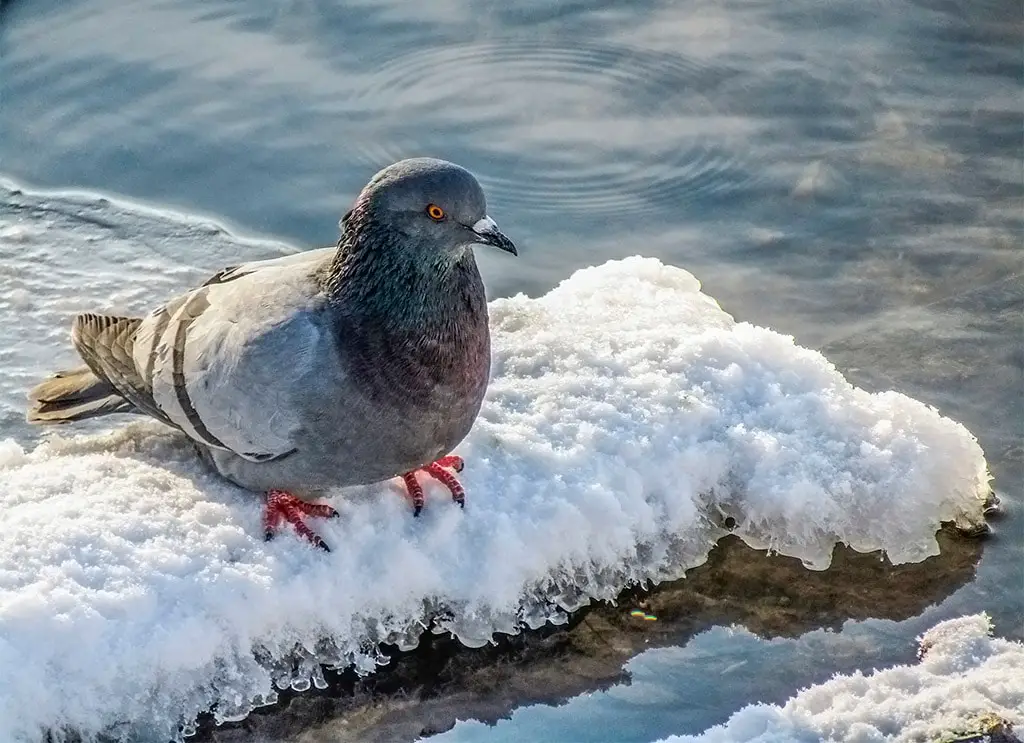
Conclusion
Our investigation into whether pigeons get cold reveals a fascinating blend of avian biology and behavioral adaptations. While pigeons, like all animals, can indeed experience discomfort in cold weather, they have evolved several remarkable mechanisms to cope with these conditions. Pigeons possess a highly efficient circulatory system that helps maintain their core body temperature. Their dense plumage and behavior of puffing up their feathers create insulating layers, minimizing heat loss.
These birds are also known to seek shelter, such as nooks and crannies in buildings, during colder periods, further aiding in temperature regulation. While pigeons may not have the same complex thermoregulation as warm-blooded mammals, their unique adaptations have allowed them to thrive in a variety of climates. It’s a testament to the resilience and adaptability of these urban-dwelling birds.
So, while pigeons may indeed feel the chill of colder weather, they have evolved strategies that enable them to endure and even thrive in conditions that might seem inhospitable to us. Their ability to adapt to different environments, including facing the challenges of temperature fluctuations, continues to make them a captivating subject of study in the world of ornithology. With their unique physiological and behavioral adaptations.

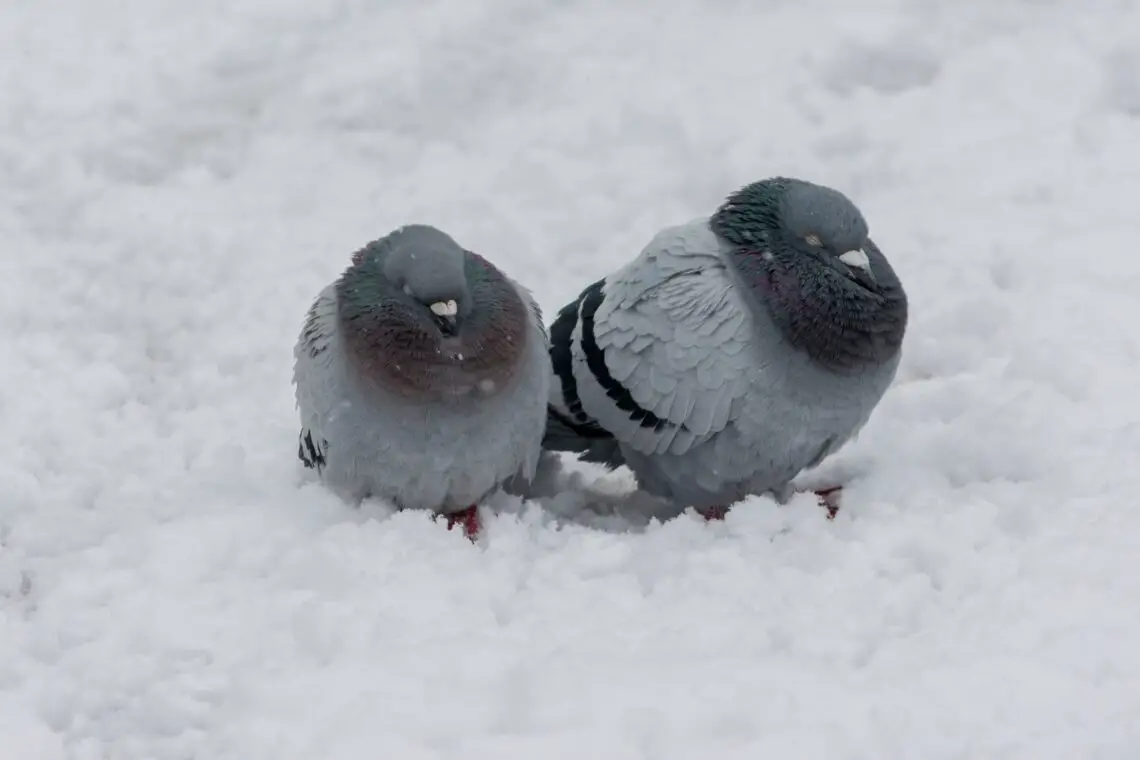
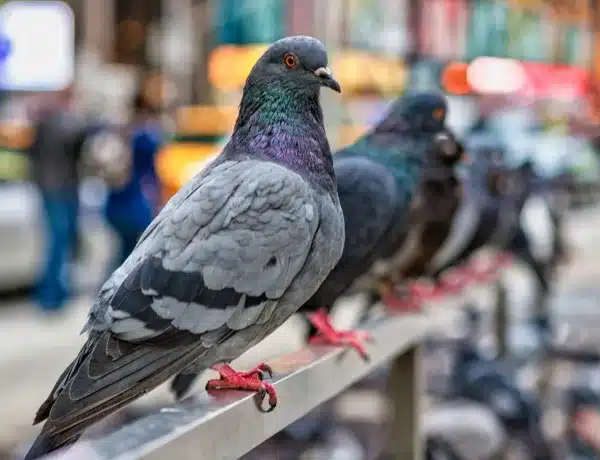
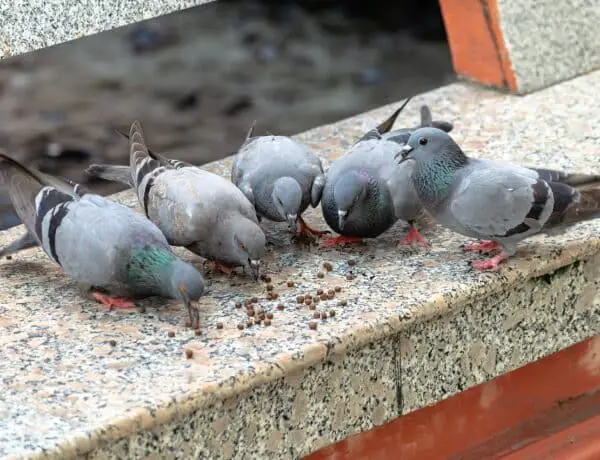
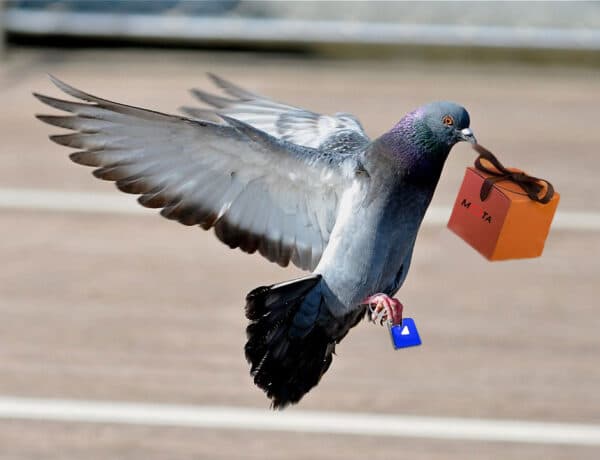
No Comments